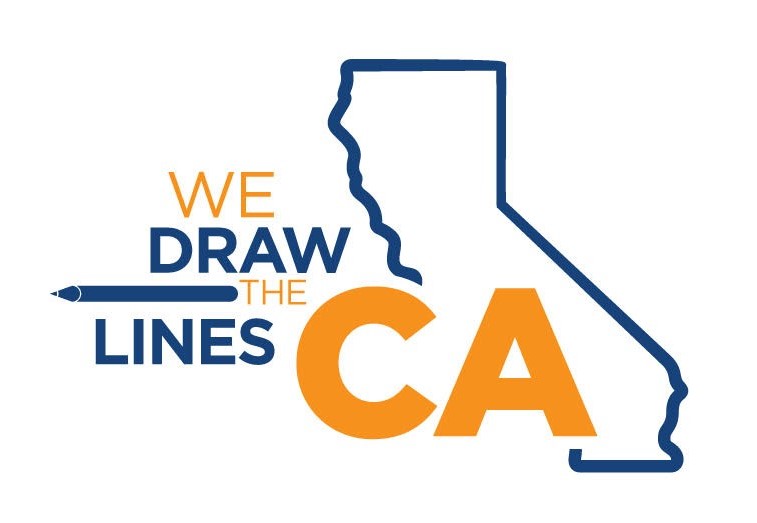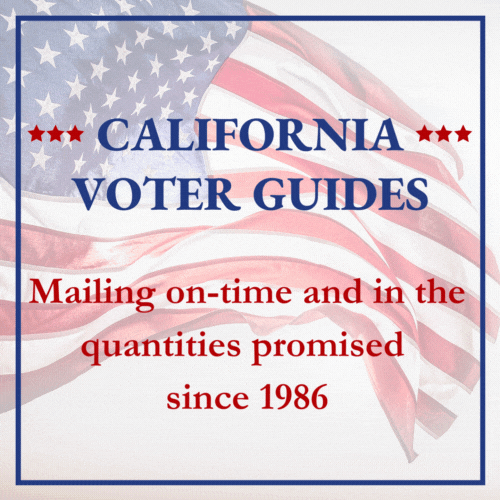Proposition 5 – A Defeat For Ballot Transparency
by Jon Coupal
President, Howard Jarvis Taxpayers Association
 In a few short weeks, California voters will have the opportunity to reject several bad ballot measures which threaten their financial security. The worst of these by far is Proposition 5 because it would lower the vote threshold for local bonds from two-thirds to 55%. The two-thirds vote requirement for local general obligation bonds has been in the California Constitution since 1879 as a protection for property owners against excessive debt that must be repaid in the future, sometimes for decades.
In a few short weeks, California voters will have the opportunity to reject several bad ballot measures which threaten their financial security. The worst of these by far is Proposition 5 because it would lower the vote threshold for local bonds from two-thirds to 55%. The two-thirds vote requirement for local general obligation bonds has been in the California Constitution since 1879 as a protection for property owners against excessive debt that must be repaid in the future, sometimes for decades.
The fact that Prop. 5 reduces the vote threshold is a material fact that voters should know in order to make an informed decision when they cast their ballots.
For statewide ballot measures, the California Attorney General is responsible for preparing a title and summary as well as the ballot label, which is the question that is presented to the voters. The ballot label is the only ballot material that is seen by every voter. Its importance cannot be overstated.
In apparent recognition that the reduction in the vote threshold for local bonds is the central purpose of Prop. 5, the Attorney General acknowledged this proposed change in law for both the title and summary yet, incredibly, not the ballot label even though it easily could have been included without exceeding the 75-word limit.
Here’s what the ballot label says: ALLOWS LOCAL BONDS FOR AFFORDABLE HOUSING AND PUBLIC INFRASTRUCTURE WITH 55% VOTER APPROVAL. LEGISLATIVE CONSTITUTIONAL AMENDMENT. Allows approval of local infrastructure and housing bonds for low-and middle-income Californians with 55% vote. [Fiscal Impact not included].”
The Howard Jarvis Taxpayers Association (HJTA) concluded that the omission constituted a violation of the Elections Code and filed a legal action in the Sacramento Superior Court which has jurisdiction over such ballot language disputes. Not surprisingly, the trial judge, Honorable Shelleyanne Chang, ruled in favor of HJTA finding that the failure to describe the existing vote threshold rendered the ballot label “misleading.” She correctly declared that the reduction itself is the “chief purpose” of Proposition 5 and the Attorney General has a duty to inform the public of a measure’s “character and purpose.” She further explained that a voter might be misled in thinking that the measure “increases” the voter approval requirement from a majority vote to a 55 percent vote.
Judge Chang also rejected the Attorney General’s argument that he was entitled to presume that the voters know existing law and should therefore fully understand Proposition 5 from the language as written. But vote thresholds in California vary significantly depending on the issue. Local special taxes have a different threshold than general taxes and school bonds have an entirely different threshold. To suggest that typical voters know what the current vote threshold is for local general obligation bonds is baseless, especially when few politicians know what they are.
Regrettably, Attorney General Bonta filed an appeal in the Court of Appeal for the Third Appellate District. There, the court reversed Judge Chang’s well-reasoned opinion and concluded that it was within the A.G.’s “discretion” to exclude a critical fact in the ballot label.
Ironically, in agreeing with A.G. that he could assume that voters would know what the current law required, the Court of Appeal also exposed its own ignorance. In its opening discussion of Proposition 5, the court states, “Since the adoption of Proposition 13 following it passage in 1978, local bonds and taxes to support those bonds generally must be approved by a two-thirds vote of electorate.” That’s wrong. The two-thirds vote requirement for local bonds has been a part of the California Constitution since 1879!
Although disappointing, the loss for taxpayers in the Court of Appeal, especially after the victory in the trial court, highlighted the recurring issue of how the ballot material process has been horribly politicized by the Attorney General. That could help in educating voters as to what Proposition 5 really does and the importance of voter education, especially when facing deceptive ballot material.
Proposition 5 – A Defeat For Ballot Transparency
by Jon Coupal
President, Howard Jarvis Taxpayers Association

In a few short weeks, California voters will have the opportunity to reject several bad ballot measures which threaten their financial security. The worst of these by far is Proposition 5 because it would lower the vote threshold for local bonds from two-thirds to 55%. The two-thirds vote requirement for local general obligation bonds has been in the California Constitution since 1879 as a protection for property owners against excessive debt that must be repaid in the future, sometimes for decades.
The fact that Prop. 5 reduces the vote threshold is a material fact that voters should know in order to make an informed decision when they cast their ballots.
For statewide ballot measures, the California Attorney General is responsible for preparing a title and summary as well as the ballot label, which is the question that is presented to the voters. The ballot label is the only ballot material that is seen by every voter. Its importance cannot be overstated.
In apparent recognition that the reduction in the vote threshold for local bonds is the central purpose of Prop. 5, the Attorney General acknowledged this proposed change in law for both the title and summary yet, incredibly, not the ballot label even though it easily could have been included without exceeding the 75-word limit.
Here’s what the ballot label says: ALLOWS LOCAL BONDS FOR AFFORDABLE HOUSING AND PUBLIC INFRASTRUCTURE WITH 55% VOTER APPROVAL. LEGISLATIVE CONSTITUTIONAL AMENDMENT. Allows approval of local infrastructure and housing bonds for low-and middle-income Californians with 55% vote. [Fiscal Impact not included].”
The Howard Jarvis Taxpayers Association (HJTA) concluded that the omission constituted a violation of the Elections Code and filed a legal action in the Sacramento Superior Court which has jurisdiction over such ballot language disputes. Not surprisingly, the trial judge, Honorable Shelleyanne Chang, ruled in favor of HJTA finding that the failure to describe the existing vote threshold rendered the ballot label “misleading.” She correctly declared that the reduction itself is the “chief purpose” of Proposition 5 and the Attorney General has a duty to inform the public of a measure’s “character and purpose.” She further explained that a voter might be misled in thinking that the measure “increases” the voter approval requirement from a majority vote to a 55 percent vote.
Judge Chang also rejected the Attorney General’s argument that he was entitled to presume that the voters know existing law and should therefore fully understand Proposition 5 from the language as written. But vote thresholds in California vary significantly depending on the issue. Local special taxes have a different threshold than general taxes and school bonds have an entirely different threshold. To suggest that typical voters know what the current vote threshold is for local general obligation bonds is baseless, especially when few politicians know what they are.
Regrettably, Attorney General Bonta filed an appeal in the Court of Appeal for the Third Appellate District. There, the court reversed Judge Chang’s well-reasoned opinion and concluded that it was within the A.G.’s “discretion” to exclude a critical fact in the ballot label.
Ironically, in agreeing with A.G. that he could assume that voters would know what the current law required, the Court of Appeal also exposed its own ignorance. In its opening discussion of Proposition 5, the court states, “Since the adoption of Proposition 13 following it passage in 1978, local bonds and taxes to support those bonds generally must be approved by a two-thirds vote of electorate.” That’s wrong. The two-thirds vote requirement for local bonds has been a part of the California Constitution since 1879!
Although disappointing, the loss for taxpayers in the Court of Appeal, especially after the victory in the trial court, highlighted the recurring issue of how the ballot material process has been horribly politicized by the Attorney General. That could help in educating voters as to what Proposition 5 really does and the importance of voter education, especially when facing deceptive ballot material.
LIST OF UPCOMING GOP EVENTS
- Southern Monterey County RWF: September Luncheon featuring Dalila Epperson
Tuesday, September 3, 2024 / 11:30 am – King Kora, 611 Canal St. , King City
- James Gallagher and Joe Patterson invite you to the San Francisco Giants vs Arizona Diamondbacks
Wednesday, September 4, 2024 / 11:00 am – Oracle Park , , San Francisco
- Foundation for American Innovation: The New Reality – Gala Dinner (SOLD OUT)
Wednesday, September 4, 2024 / 5:00 pm – Fort Mason , Gallery 308, San Francisco
- FAI’s Reboot24: The New Reality Conference with Keynote by Garry Tan
Thursday, September 5, 2024 / 8:00 am – Fort Mason, Cowell Theater, San Francisco
- East Bay Republican Club: Fall Reception featuring Joel B. Pollak
Thursday, September 5, 2024 / 4:00 pm – Location Provided Upon RSVP, , Alameda
- Foundation for American Innovation: Bottlenecks Summit
Friday, September 6, 2024 / N/A – Location Provided Upon RSVP, , San Francisco
- Anna Cheng Kramer Fundraising Event
Friday, September 6, 2024 / 6:00 pm – Yan Peninsula, 1180 El Camino Real, Millbrae,
- Commonwealth Club: Risks and Returns featuring Former U.S. Secretary of Commerce Wilbur Ross
Monday, September 9, 2024 / 11:30 am – Commonwealth Club, 110 The Embarcadero, San Francisco
- Palo Alto RWF: China’s Global Expansion, Past & Future featuring Nan Su
Tuesday, September 10, 2024 / 11:30 am – Baylands Golf Links Cafe, 1875 Embarcadero Rd, Palo Alto
- Association of Monterey Bay Conservatives: Presidential Debate Watch Party
Tuesday, September 10, 2024 / 5:30 pm – Mountain Mikes Pizza, 724 Abrego St., Monterey
- 2024 Presidential Debate
Tuesday, September 10, 2024 / 6:00 pm – Online (Via Livestream), ,
- Liberty Forum of Silicon Valley: The Bulletproof Mind featuring Lt. Col. Dave Grossman
Tuesday, September 10, 2024 / 6:15 pm – IFES Portuguese Hall, 432 Stierlin Road, Mountain View
- Silicon Valley Biz Pac: Hitting The Streets
Wednesday, September 11, 2024 / 5:00 pm – Location Provided Upon RSVP, , San Jose
- Mt Diablo Republican Club: Annual Fundraiser featuring Tom Del Beccaro
Wednesday, September 11, 2024 / 5:30 pm – Zio Fraedos, 611 Gregory Lane, Pleasant Hill
- Santa Cruz RWF: September Coffee Talk and Social
Thursday, September 12, 2024 / 10:00 am – California Coffee, 9105 Soquel Drive, Aptos
- Leadership Institute: GOTV Training (Fairfield)
Saturday, September 14, 2024 / 9:30 am – Jelly Belly Factory, 1 Jelly Belly Lane, Fairfield
- Hon Lien for Milpitas Mayor Fundraiser
Saturday, September 14, 2024 / 2:00 pm – King Eggroll Express, 442 W Calaveras Blvd., Milpitas
- Novato RWF: September Luncheon featuring Nan Su
Tuesday, September 17, 2024 / 11:30 am – Marin Country Club, 500 Country Club Drive, Novato
- Mid-Peninsula RWF: September Luncheon featuring Vicki Nohrden
Wednesday, September 18, 2024 / 11:30 am – Divino Ristorante , 968 Ralston Avenue , Belmont
- Monterey County Republican Party: Annual Reagan Dinner featuring Adam Carolla
Wednesday, September 18, 2024 / 5:00 pm – Salinas Sports Complex , 1034 North Main Street , Salinas
- SPARC and CCR: Vote Smart: Decoding November Ballot Measures featuring Tino Rossi
Wednesday, September 18, 2024 / 6:30 pm – Online (Via Zoom), ,
- Lamorinda RWF: September Luncheon featuring Local Republican Candidates Sonia Ledo, Katherine Piccinini, and Joe Rubay
Thursday, September 19, 2024 / 11:30 am – Zio Fraedos, 611 Gregory Lane, Pleasant Hill
- West Valley RWF: September Luncheon featuring Loren Spivack and Dr. Gloria Hom
Thursday, September 19, 2024 / 11:30 am – Blue Pheasant Restaurant, 22100 Stevens Creek Blvd., Cupertino
- Vallejo Navy League: Sunset Cruise Fundraiser for Wreaths Across America
Friday, September 20, 2024 / 6:30 pm – Angel Island Tiburon Ferry, ,
- Mid-Peninsula RWF: Fundraiser Trivia Game & Silent Auction featuring Taylor Luna
Saturday, September 21, 2024 / 2:00 pm – Location Provided Upon RSVP, , Redwood City
- Pacific Research Institute: Annual Sir Antony Fisher Dinner featuring Kimberley Strassel
Saturday, September 21, 2024 / 6:00 pm – Four Seasons Hotel Silicon Valley , 2050 University Ave, East Palo Alto
- The Republican Club of San Francisco: Government Gangsters featuring Kash Patel
Monday, September 23, 2024 / 5:30 pm – Italian Athletic Club, , San Francisco
- San Ramon Valley RWF: Election Integrity and Counting Your Vote in Contra Costa County featuring Julie Mobley
Tuesday, September 24, 2024 / 11:30 am – Black Bear Diner, 807 Camino Ramon, Danville
- Santa Cruz RWF: September General Meeting featuring Nan Su
Tuesday, September 24, 2024 / 12:00 pm – Seascape Golf Club, , Aptos
- Marin Republican Women Federated: What Effect Will the Election Outcome Have On Your Financial Planning featuring David Hollander, Esq
Wednesday, September 25, 2024 / 11:30 am – The Club at McInnis, , San Rafael
- San Mateo Republican Party: Annual Reagan Dinner featuring Brian Sussman
Thursday, September 26, 2024 / 6:00 pm – Location Provided Upon RSVP, ,
- Alameda County Republican Party: Jason Chaffetz at UC Berkeley Campus
Friday, September 27, 2024 / 5:30 pm – Location Provided Upon RSVP, , Berkeley
- The Republican Club at The Villages: General Meeting and Bar-B-Que
Saturday, September 28, 2024 / 3:00 pm – Gazebo Park, , San Jose
- SVACR: School Board Candidates Fundraising Luncheon
Sunday, September 29, 2024 / 1:00 pm – Calvary Chapel San Jose, 1175 Hillsdale Ave, San Jose
Amy Sharp: Making A Difference in Education
by Roger Riffenburgh

As she runs for her third term on the Solano County Board of Education, Amy Sharp sets an example of a trustee who can make important progress in serving students, despite being the lone Republican on a seven member board. She has succeeded by building relationships on the board and in the community, pointing out problems and providing solutions, and asking board members to take responsibility. Amy’s key belief is: “Our kids aren’t one-size-fits-all. And their education shouldn’t be either.”
The Solano County Board of Education has a different role than a typical school district board. The County Board supports local districts, runs programs at the juvenile detention facility, offers special and vocational education, and authorizes charter schools in the county.
Sharp is proud of her successful advocacy. After hearing repeated complaints about failures to transport special education students properly, sometimes leaving students sitting by the street, Amy pushed the board to get a transportation coordinator to prepare to receive students from their first day in the classroom. She learned from parole officers that Individual Education Plans for kids in the juvenile justice system were not being implemented well. She says, “We need to help kids in the system get off the wrong path and onto the right one.” She has worked well with other local agencies to attack the problem, which has led to wide bi-partisan support for her efforts.
Sometimes she has succeeded by simply taking an item off the consent calendar and requiring board members to vote publicly on a questionable action. She found some large budget reallocations being made by staff contrary to the Education Code, called them out, and now they are being done correctly. While previously the budget was presented with little time to evaluate it, her efforts have led to earlier review to allow time to analyze the budget.
Amy Sharp’s day job is serving as a district representative for county Supervisor Mitch Mashburn. Among her activities in the community has been serving as Honorary Commander for the 571st Mobility Support Advisory Squadron at Travis Air Force Base, which allowed her to shadow service members and gain insight into their work.
Amy grew up in Stockton. After high school, she attended Sacramento State University, where she met Dan Sharp at the College Republicans club. Eventually, they married and moved to Solano County, where her husband was raised. They had two sons, and Amy cared for them as a stay-at-home-mom. As her boys grew up, she went to work at her husband’s business, which does political and land use consulting.
At the same time, Amy started advocating for children, as she saw the difficulties that her two nieces faced while trying to get an education. They suffered from Batten Disease, a debilitating neurological disorder. Despite good intentions from the staff, the special education system sometimes left them without transportation or other needs. They eventually succumbed to the disease.
In 2016 when the seat came open on the County Board of Education, she ran for it and won, motivated in part by a desire to honor her nieces. And in 2018 she finished up her Sacramento State BA in Government/Political Science.
The Board of Education’s 2nd District includes Vacaville North of I-80, Fairfield West of I-80, Green Valley, Suisun Valley, and other parts of rural Solano County and Napa County.
Amy Sharp lives in Vacaville with her husband Dan. In her spare time one might find her scrapbooking with photos and memorabilia. You can learn more about Amy on her campaign website, amysharp.org.
California Citizens Redistricting Commission – District Viewer

The Commission has developed a district viewer that allows you to more easily navigate visualizations and zoom in and out of geographic areas while layering congressional, State Senate and Assembly boundaries.
Amy Sharp: Making A Difference in Education
by Roger Riffenburgh

As she runs for her third term on the Solano County Board of Education, Amy Sharp sets an example of a trustee who can make important progress in serving students, despite being the lone Republican on a seven member board. She has succeeded by building relationships on the board and in the community, pointing out problems and providing solutions, and asking board members to take responsibility. Amy’s key belief is: “Our kids aren’t one-size-fits-all. And their education shouldn’t be either.”
The Solano County Board of Education has a different role than a typical school district board. The County Board supports local districts, runs programs at the juvenile detention facility, offers special and vocational education, and authorizes charter schools in the county.
Sharp is proud of her successful advocacy. After hearing repeated complaints about failures to transport special education students properly, sometimes leaving students sitting by the street, Amy pushed the board to get a transportation coordinator to prepare to receive students from their first day in the classroom. She learned from parole officers that Individual Education Plans for kids in the juvenile justice system were not being implemented well. She says, “We need to help kids in the system get off the wrong path and onto the right one.” She has worked well with other local agencies to attack the problem, which has led to wide bi-partisan support for her efforts.
Sometimes she has succeeded by simply taking an item off the consent calendar and requiring board members to vote publicly on a questionable action. She found some large budget reallocations being made by staff contrary to the Education Code, called them out, and now they are being done correctly. While previously the budget was presented with little time to evaluate it, her efforts have led to earlier review to allow time to analyze the budget.
Amy Sharp’s day job is serving as a district representative for county Supervisor Mitch Mashburn. Among her activities in the community has been serving as Honorary Commander for the 571st Mobility Support Advisory Squadron at Travis Air Force Base, which allowed her to shadow service members and gain insight into their work.
Amy grew up in Stockton. After high school, she attended Sacramento State University, where she met Dan Sharp at the College Republicans club. Eventually, they married and moved to Solano County, where her husband was raised. They had two sons, and Amy cared for them as a stay-at-home-mom. As her boys grew up, she went to work at her husband’s business, which does political and land use consulting.
At the same time, Amy started advocating for children, as she saw the difficulties that her two nieces faced while trying to get an education. They suffered from Batten Disease, a debilitating neurological disorder. Despite good intentions from the staff, the special education system sometimes left them without transportation or other needs. They eventually succumbed to the disease.
In 2016 when the seat came open on the County Board of Education, she ran for it and won, motivated in part by a desire to honor her nieces. And in 2018 she finished up her Sacramento State BA in Government/Political Science.
The Board of Education’s 2nd District includes Vacaville North of I-80, Fairfield West of I-80, Green Valley, Suisun Valley, and other parts of rural Solano County and Napa County.
Amy Sharp lives in Vacaville with her husband Dan. In her spare time one might find her scrapbooking with photos and memorabilia. You can learn more about Amy on her campaign website, amysharp.org.
California Citizens Redistricting Commission – District Viewer

The Commission has developed a district viewer that allows you to more easily navigate visualizations and zoom in and out of geographic areas while layering congressional, State Senate and Assembly boundaries.
LIST OF UPCOMING GOP EVENTS
- Southern Monterey County RWF: September Luncheon featuring Dalila Epperson
Tuesday, September 3, 2024 / 11:30 am – King Kora, 611 Canal St. , King City
- James Gallagher and Joe Patterson invite you to the San Francisco Giants vs Arizona Diamondbacks
Wednesday, September 4, 2024 / 11:00 am – Oracle Park , , San Francisco
- Foundation for American Innovation: The New Reality – Gala Dinner (SOLD OUT)
Wednesday, September 4, 2024 / 5:00 pm – Fort Mason , Gallery 308, San Francisco
- FAI’s Reboot24: The New Reality Conference with Keynote by Garry Tan
Thursday, September 5, 2024 / 8:00 am – Fort Mason, Cowell Theater, San Francisco
- East Bay Republican Club: Fall Reception featuring Joel B. Pollak
Thursday, September 5, 2024 / 4:00 pm – Location Provided Upon RSVP, , Alameda
- Foundation for American Innovation: Bottlenecks Summit
Friday, September 6, 2024 / N/A – Location Provided Upon RSVP, , San Francisco
- Anna Cheng Kramer Fundraising Event
Friday, September 6, 2024 / 6:00 pm – Yan Peninsula, 1180 El Camino Real, Millbrae,
- Commonwealth Club: Risks and Returns featuring Former U.S. Secretary of Commerce Wilbur Ross
Monday, September 9, 2024 / 11:30 am – Commonwealth Club, 110 The Embarcadero, San Francisco
- Palo Alto RWF: China’s Global Expansion, Past & Future featuring Nan Su
Tuesday, September 10, 2024 / 11:30 am – Baylands Golf Links Cafe, 1875 Embarcadero Rd, Palo Alto
- Association of Monterey Bay Conservatives: Presidential Debate Watch Party
Tuesday, September 10, 2024 / 5:30 pm – Mountain Mikes Pizza, 724 Abrego St., Monterey
- 2024 Presidential Debate
Tuesday, September 10, 2024 / 6:00 pm – Online (Via Livestream), ,
- Liberty Forum of Silicon Valley: The Bulletproof Mind featuring Lt. Col. Dave Grossman
Tuesday, September 10, 2024 / 6:15 pm – IFES Portuguese Hall, 432 Stierlin Road, Mountain View
- Silicon Valley Biz Pac: Hitting The Streets
Wednesday, September 11, 2024 / 5:00 pm – Location Provided Upon RSVP, , San Jose
- Mt Diablo Republican Club: Annual Fundraiser featuring Tom Del Beccaro
Wednesday, September 11, 2024 / 5:30 pm – Zio Fraedos, 611 Gregory Lane, Pleasant Hill
- Santa Cruz RWF: September Coffee Talk and Social
Thursday, September 12, 2024 / 10:00 am – California Coffee, 9105 Soquel Drive, Aptos
- Leadership Institute: GOTV Training (Fairfield)
Saturday, September 14, 2024 / 9:30 am – Jelly Belly Factory, 1 Jelly Belly Lane, Fairfield
- Hon Lien for Milpitas Mayor Fundraiser
Saturday, September 14, 2024 / 2:00 pm – King Eggroll Express, 442 W Calaveras Blvd., Milpitas
- Novato RWF: September Luncheon featuring Nan Su
Tuesday, September 17, 2024 / 11:30 am – Marin Country Club, 500 Country Club Drive, Novato
- Mid-Peninsula RWF: September Luncheon featuring Vicki Nohrden
Wednesday, September 18, 2024 / 11:30 am – Divino Ristorante , 968 Ralston Avenue , Belmont
- Monterey County Republican Party: Annual Reagan Dinner featuring Adam Carolla
Wednesday, September 18, 2024 / 5:00 pm – Salinas Sports Complex , 1034 North Main Street , Salinas
- SPARC and CCR: Vote Smart: Decoding November Ballot Measures featuring Tino Rossi
Wednesday, September 18, 2024 / 6:30 pm – Online (Via Zoom), ,
- Lamorinda RWF: September Luncheon featuring Local Republican Candidates Sonia Ledo, Katherine Piccinini, and Joe Rubay
Thursday, September 19, 2024 / 11:30 am – Zio Fraedos, 611 Gregory Lane, Pleasant Hill
- West Valley RWF: September Luncheon featuring Loren Spivack and Dr. Gloria Hom
Thursday, September 19, 2024 / 11:30 am – Blue Pheasant Restaurant, 22100 Stevens Creek Blvd., Cupertino
- Vallejo Navy League: Sunset Cruise Fundraiser for Wreaths Across America
Friday, September 20, 2024 / 6:30 pm – Angel Island Tiburon Ferry, ,
- Mid-Peninsula RWF: Fundraiser Trivia Game & Silent Auction featuring Taylor Luna
Saturday, September 21, 2024 / 2:00 pm – Location Provided Upon RSVP, , Redwood City
- Pacific Research Institute: Annual Sir Antony Fisher Dinner featuring Kimberley Strassel
Saturday, September 21, 2024 / 6:00 pm – Four Seasons Hotel Silicon Valley , 2050 University Ave, East Palo Alto
- The Republican Club of San Francisco: Government Gangsters featuring Kash Patel
Monday, September 23, 2024 / 5:30 pm – Italian Athletic Club, , San Francisco
- San Ramon Valley RWF: Election Integrity and Counting Your Vote in Contra Costa County featuring Julie Mobley
Tuesday, September 24, 2024 / 11:30 am – Black Bear Diner, 807 Camino Ramon, Danville
- Santa Cruz RWF: September General Meeting featuring Nan Su
Tuesday, September 24, 2024 / 12:00 pm – Seascape Golf Club, , Aptos
- Marin Republican Women Federated: What Effect Will the Election Outcome Have On Your Financial Planning featuring David Hollander, Esq
Wednesday, September 25, 2024 / 11:30 am – The Club at McInnis, , San Rafael
- San Mateo Republican Party: Annual Reagan Dinner featuring Brian Sussman
Thursday, September 26, 2024 / 6:00 pm – Location Provided Upon RSVP, ,
- Alameda County Republican Party: Jason Chaffetz at UC Berkeley Campus
Friday, September 27, 2024 / 5:30 pm – Location Provided Upon RSVP, , Berkeley
- The Republican Club at The Villages: General Meeting and Bar-B-Que
Saturday, September 28, 2024 / 3:00 pm – Gazebo Park, , San Jose
- SVACR: School Board Candidates Fundraising Luncheon
Sunday, September 29, 2024 / 1:00 pm – Calvary Chapel San Jose, 1175 Hillsdale Ave, San Jose










